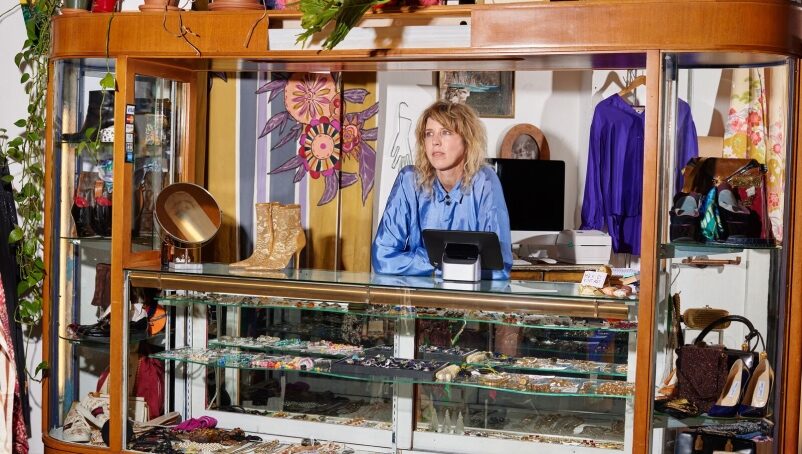The 3 most common types of retail loss
Retail loss prevention is the practice of safeguarding a business from theft, damage and financial loss. It involves creating strategies and processes to minimize shrinkage.
Prevention is always better than reaction. By assessing your risks and implementing appropriate measures, you can significantly reduce your chances of becoming a victim of retail loss.
These are the three most common types of retail loss for small businesses:
1. Shoplifting
Shoplifting is when someone takes merchandise from a store without paying for it.
It’s a problem for many small businesses. According to a Forbes Advisor survey, 90% of small business retailers nationwide have experienced theft at their stores, and 83% said they believe retail theft is at least a somewhat major issue.
75% of the small business retailers surveyed reported monthly losses between $500 and $2,500 due to theft.
Know the most common shoplifting techniques:
- Distraction. Shoplifters sometimes work in teams — one thief distracts employees while the other steals merchandise. This usually occurs during busy, peak shop hours.
- Layering. This is when a criminal adds multiple clothing items to a shoplifter’s body and exits the store with concealed stolen goods.
- Boosting. Tricksters use a custom-made bag lined with metal to prevent security tags from setting off an alarm.
- Smash and grab. Criminals break through a barrier (glass window, door or display case) and steal merchandise without concern for making noise or bringing attention to the shoplifter’s actions.
- Returns fraud. This occurs when an individual returns an item that is counterfeit, stolen or purchased from another retailer at a discount rate. In 2023, return fraud contributed $101 billion in overall losses for retailers.
2. Employee theft
Employee theft is stealing an employer’s property or assets for personal use.
In the National Retail Federation’s (NRF) 2023 Security Survey, internal (employee) theft accounted for 29% of retail shrink loss.
There are three ways employees typically steal from employers:
- Buddy punching. A form of payroll fraud, buddy punching is clocking in a co-worker when they are not at work.
- Data/information theft. This means illegally obtaining data from company computer systems. This can include other employees’ and customers’ personal identifiable information.
- Sweethearting. This involves giving a friend or family member an employee discount or returning non-existent merchandise for a refund.
3. Inventory mismanagement
Inventory loss is an intentional mistake in inventory management, pricing, or returns processing that can lead to financial loss. While not always malicious, it can still be a problem.
Here are three examples of inventory mismanagement:
- Clerical errors when receiving stock. Incorrectly accounting for stock as it arrives is an example of an operational error that can cause revenue loss.
- Incorrect inventory counts. Mistakes can happen when counting inventory — especially if a clear inventory system is not in place.
- Damaged items. One hidden area of retail shrink includes inventory that retailers cannot sell because it’s damaged. Establishing unboxing procedures and rules around carefully handling merchandise as it comes in can help your bottom line.
How retail business insurance can help with retail theft
Think of business insurance as a safety net that can protect your business from financial hardship. Imagine a fire destroys your store or a customer slips and injures themselves on your property. These events can cost your business. But retail insurance can help you recover.
To help safeguard your business, consider these essential coverage options:
- Commercial property insurance. This can help cover damage to your store building, inventory, furnishings/fixtures and equipment.
- Business interruption insurance. This coverage, often included with commercial property coverage, could help provide income to keep your business running during an unexpected closure.
- General liability insurance. A popular coverage for small business owners, this policy can help protect you from a wide range of accidents and incidents, including non-employee injuries or property damage.
- Product liability insurance. If a customer claims that an issue with your product caused them injury or property damage, this coverage can help.
Shoplifting vs. theft: Understand the insurance implications
Shoplifting and theft are often used interchangeably, but they have distinct meanings in insurance coverage.
- Shoplifting refers to taking merchandise from a store without paying for it. It’s typically considered a specific form of theft that occurs on retail premises.
- Theft involves either an employee or someone who unlawfully enters the premises taking property.
Generally, theft is broader and could include most acts of stealing, whether it’s shoplifting, burglary or robbery. Here’s where it gets tricky: While commercial property insurance can help cover theft, shoplifting and employee theft might not be explicitly covered under standard property insurance policies. Some policies may require an additional rider or endorsement to cover shoplifting loss.
Why is this? The short answer is that it can be difficult to file a claim on events like shoplifting or employee theft. Determining if something was stolen, how much was stolen and when the theft occurred isn’t always straightforward.
Understanding your policy terms is crucial. Work closely with your insurance provider to clarify policy specifics and make any necessary adjustments to your coverage to cover all potential risks.
6 effective loss prevention strategies and best practices
There are several steps small business owners can take to prevent theft and retail loss.
1. Stay engaged with your customers
Being visible and available to customers is one of the easiest ways to combat retail theft — and it’s totally free.
Engaging in pleasant conversation shows you care about those who enter your store. Providing a good customer experience not only helps consumers connect with business owners but can also help prevent theft.
Here are a few customer-focused tactics that can help deter theft:
- Greet every customer. Let them know you’re aware of their presence, but also take a genuine interest in their needs.
- Know your customers. Build relationships with regular customers. They can be your extra eyes on the store.
- Increase staff coverage during busy periods. Serve customers appropriately for busy weekends and high-traffic holiday seasons.
- Keep fitting rooms staffed. Be readily available to help customers during their shopping experience.
2. Create a secure retail store environment
Combining technology and a few common sense approaches can help deter theft. Here are some practical steps you can take:
- Visibility is key. Ensure your store is well-lit, both inside and out. Good lighting deters criminals and helps you monitor activity. Install anti-theft mirrors in-store to reduce blind spots.
- Assess the exterior of your business. Remove large greenery or shrubs and add additional exterior lighting to help deter opportunistic criminal activity.
- Secure your entrances and exits. Keep doors and windows locked when the store is closed. Consider installing security bars or alarms.
- Switch to a keyless lock system. Minimize access and lost keys to your business. This option grants entry without a key and uses wireless systems, apps, keypads or smart cards.
- Organize your merchandise. Prevent clutter and create clear aisles. This makes it easier for customers to shop and for you to monitor the store.
- Protect your cash. Use cash registers with secure drawers. Limit the amount of cash on hand.
- Secure your backroom. Restrict access to your backroom and keep valuable items locked away.
- Invest in video surveillance. Use wireless security cameras or CCTV systems to monitor the interior and exterior of your business. Add signage that announces to customers that they are being monitored.
- Work with your neighbors. Join forces with neighboring stores to split the cost of hiring a security guard during the holiday season and high-traffic hours.
3. Organize your business
Messy shops make shoplifting easy. To reduce theft, design a store layout that categorizes products and improves customer flow.
Avoid overstocking shelves, observe the natural flow of a customer’s journey and be aware of hidden corners where shoplifting can become an easy opportunity.
Here are a few floor plan organizational and spatial tips that can help deter theft:
- Decrease unnecessary clutter. Display a limited amount of products. Keep the rest in storage until needed.
- Create shorter displays with less inventory. This will allow you and your store associates to see customers easily in real-time and quickly spot missing inventory.
- Keep expensive items close. Place high-value items near the cash wrap or checkout stations instead of near exits.
- Secure expensive items. Use locked display cases and anti-theft cables to secure costly items.
4. Employee training programs and awareness
Your employees are your first line of defense against loss. Investing time in training them can significantly reduce your risk of theft.
- Hire carefully. Conduct thorough background checks on potential employees. Trustworthy staff are less likely to steal.
- Open communication. Foster an open, honest work environment where employees feel comfortable reporting suspicious activity.
- Emphasize customer service. Good customer service can deter shoplifting. Train your employees to be friendly and attentive and to maintain a visible presence on the sales floor.
- Cash handling procedures: Implement clear cash handling procedures to minimize the risk of internal theft.
- Regular audits. Conduct surprise inventory checks and cash audits to deter theft and identify potential issues.
Include loss prevention training when you hire staff. Educate them about different types of retail theft, how to identify suspicious behavior and proper security procedures. Include education about:
- What to do when faced with a potential shoplifter in the store.
- Ways to identify suspicious behavior, such as taking multiple items into dressing rooms but coming out with one item, and excessively watching staff. Provide guidelines on what staff should do if they see a suspicious person return to the store.
- Identifying exits and assigning employee zones to watch over customers, so no corner is left open to theft.
- Clear transaction, return, and exchange policies and how to use your store’s POS system.
- How to identify price switching and scams.
- How to handle high-priced items when customers request to view inventory under lock and key. This includes staying with the customer until they are finished viewing an item and returning the merchandise to the locked display case.
PRO TIPS:
- Role-play with employees and determine what to do if a shoplifter is caught in the store.
- Offer team incentives for lowering retail shrinkage, but keep safety top of mind — do not expect employees to detain a shoplifter.
5. Technology and loss prevention efforts
Technology can be a powerful tool in the fight against retail loss. While it might seem like a big investment, many solutions offer a good return on investment by reducing shrink.
- Security cameras. Modern surveillance cameras offer high-resolution images and can even be equipped with motion sensors and facial recognition software. Consider placing them strategically throughout your store to boost retail security.
- Inventory management systems. Accurate inventory tracking can help identify discrepancies and potential theft. Many affordable inventory management software options are available.
- Loss prevention software: Specialized software can analyze sales data, employee performance, and security camera footage to identify patterns and potential red flags.
- Electronic Article Surveillance (EAS). EAS systems deter shoplifting by attaching tags to merchandise. While they might increase customer friction, they can significantly reduce losses.
- Point-of-Sale (POS) systems. Modern POS systems can track sales data and identify potential discrepancies or fraudulent activity.
Here are some creative ways to use your POS system to help minimize theft on the sales floor and behind the counter:
- Centralized POS. Position your POS/cash wrap in a central location of your store so you can serve customers and keep an eye on the sales floor.
- Review sales data. Carve out time daily and weekly to identify transactional red flags.
- Keep an eye on employees. Monitor employee login habits and review return overrides when inventory numbers are not matching up.
6. Risk assessment and mitigation
Identify potential vulnerabilities in your business and take a proactive approach to loss prevention. By understanding your risks, you can develop effective strategies to mitigate them.
- Conduct a store assessment. Walk through your store and identify potential security weaknesses. Consider factors like product placement, blind spots and ease of access.
- Analyze loss data. Review your sales data and loss history to identify patterns or trends. This information can help pinpoint areas of concern.
- Employee behavior analysis. Monitor employee behavior for signs of potential theft or collusion.
- Develop a response plan. Create a plan for handling different incidents, such as shoplifting, theft or emergencies.
- Regular reviews. Conduct routine security audits to ensure your measures are effective and up-to-date.
Legal and ethical retail theft prevention
Navigating the legal and ethical landscape of retail loss prevention is crucial. Misguided actions can lead to legal trouble and damage your business’s reputation.
- Know the law. Understand the laws governing shoplifting, theft, surveillance, and employee rights in your local area. Stay updated on changes in legislation.
- Employee rights. Respect employee privacy and avoid discriminatory practices. Be mindful of surveillance policies and ensure you comply with labor laws.
- Customer privacy. Protect customer data and adhere to privacy regulations. Be transparent about how you collect and use customer information.
- Ethical conduct. Treat customers and employees with respect. Avoid aggressive or intimidating tactics that could harm your business’s reputation.
- Consult with legal counsel. When in doubt, consult with an expert. If you have questions about legal or ethical matters, seek advice from a law practitioner specializing in retail law.






